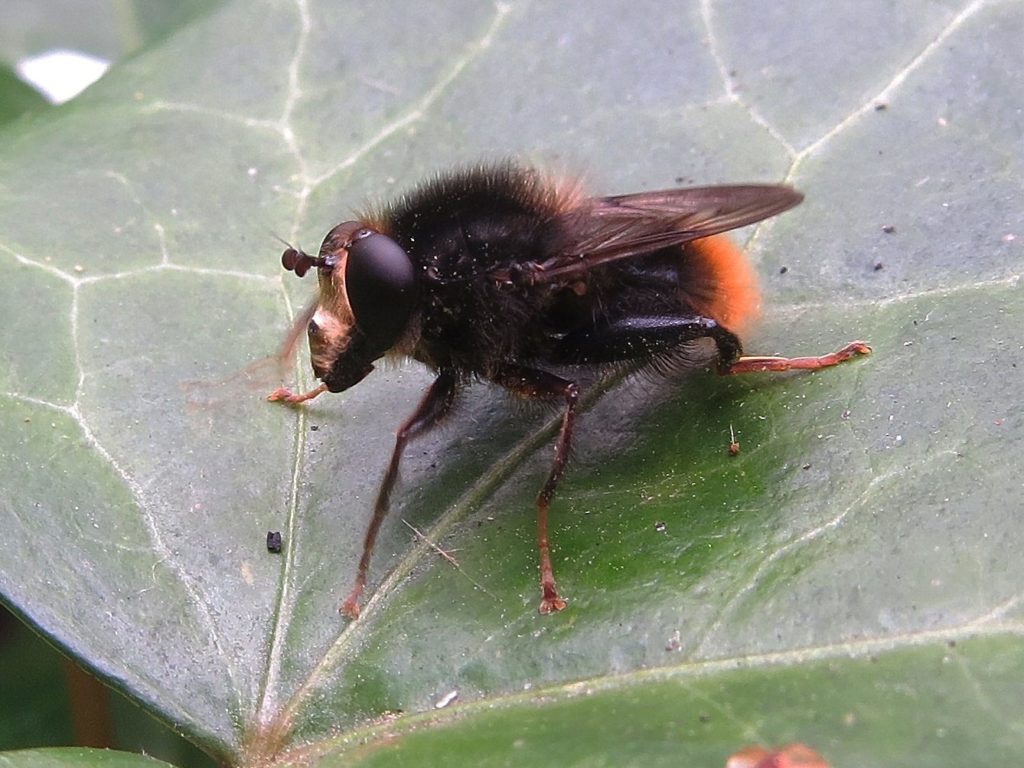
Well, at last it’s warm. The anticyclone is heating up the air nicely, a couple of degrees warmer each day. The air is buzzing with hoverflies, and luckily with Mike about, we can actually put names to them. This one, a really remarkable bumblebee mimic, is Criorhina ranunculi – nothing to do with buttercups (Ranunculus), but a species whose larvae live in rotting wood, and it does have an odd nose (rhino-). Quite an unusual species.
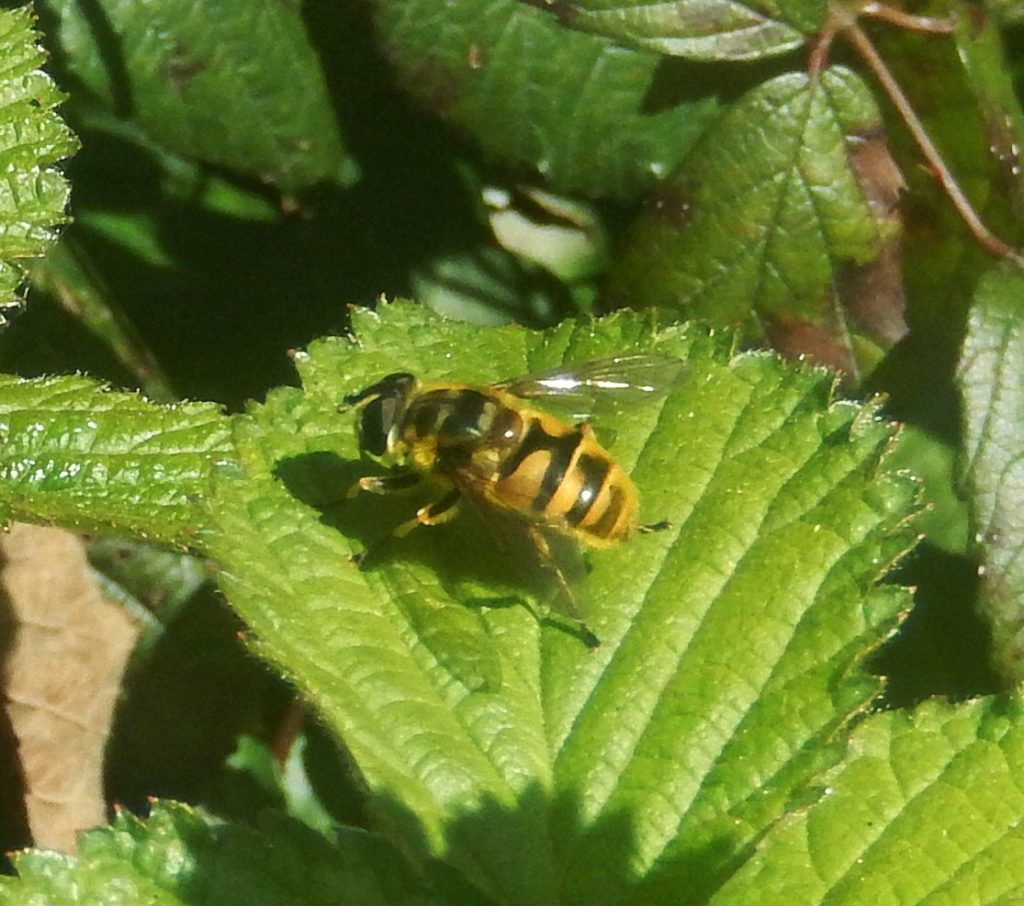
This one, Myothropa florea, is a much more typical hoverfly, mimicking a wasp. Mike says he’s recorded some 18 species in the Gunnersbury Triangle LNR.

This is a male Nomada cuckoo bee, a brood parasite of other bee species. Its jizz is quite wasp-like in flight, with a flash of aposematic yellow-striped abdomen looking distinctly worth avoiding. At rest, it looks much more like the bee that it is.
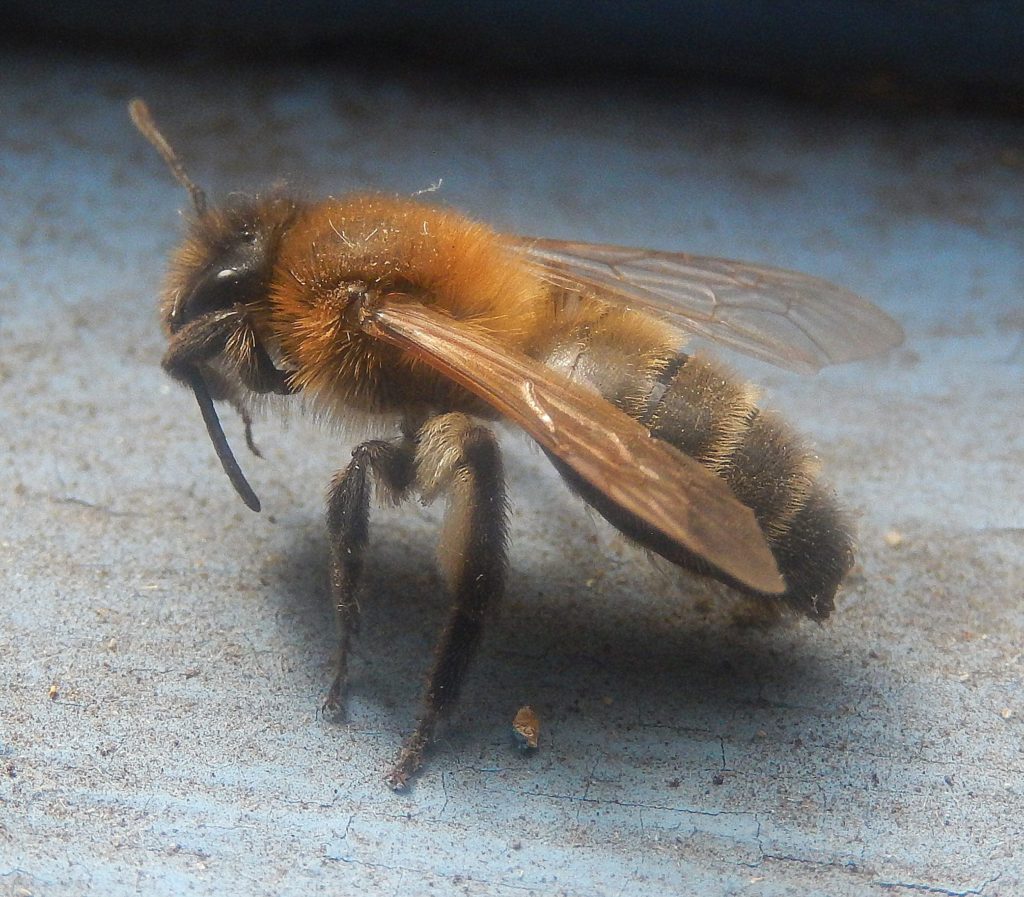
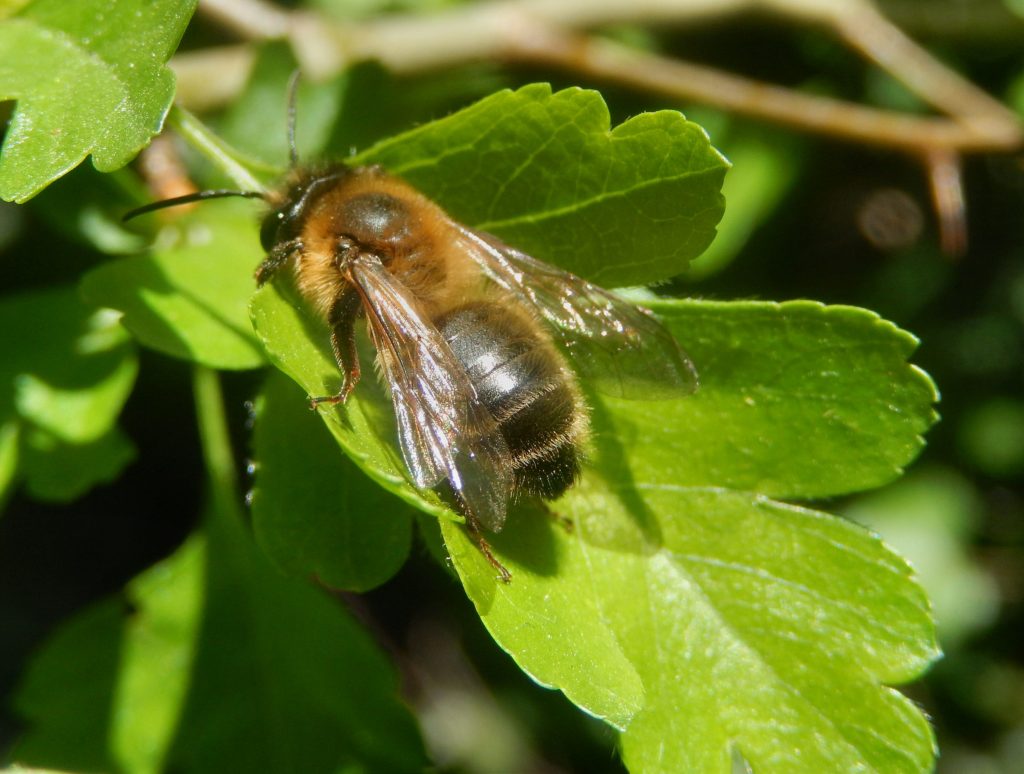
This honey-bee-like insect, in contrast, is obviously a bee, and not a parasite. If you’re used to honey-bees, you’ll notice it has a markedly short head, shorter than it is broad: all the Andrena genus are like this. The head can be short because the tongue is also short, the genus being adapted to short-tubed flowers, so evolution has economically saved energy on building a wastefully long head.
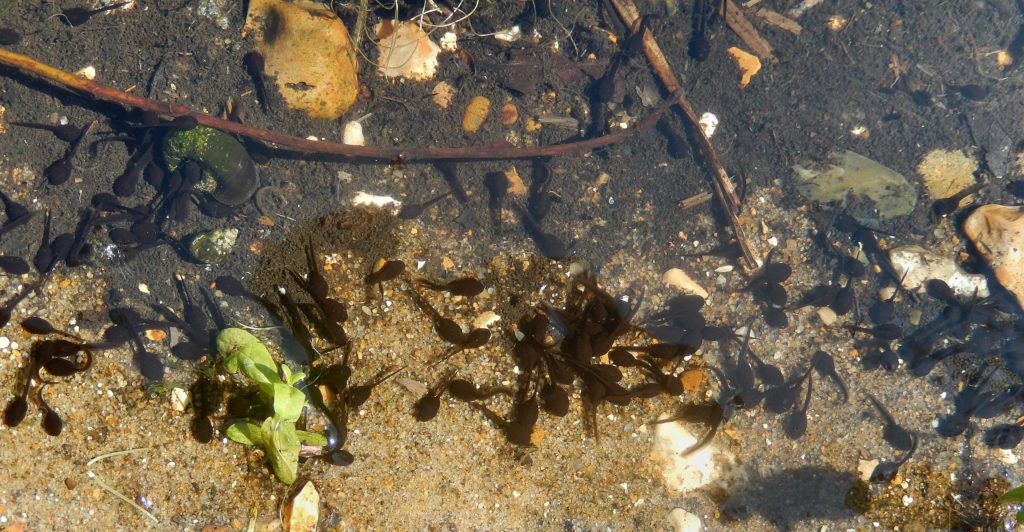
Down at the pond, the sun sparkled on the clear water; a newt or two lurked between the weeds; and dozens of tiny tadpoles wriggled in the shallows. The Mallard pair swam about just below us, greedily feeding. I hope they miss some of the tadpoles.
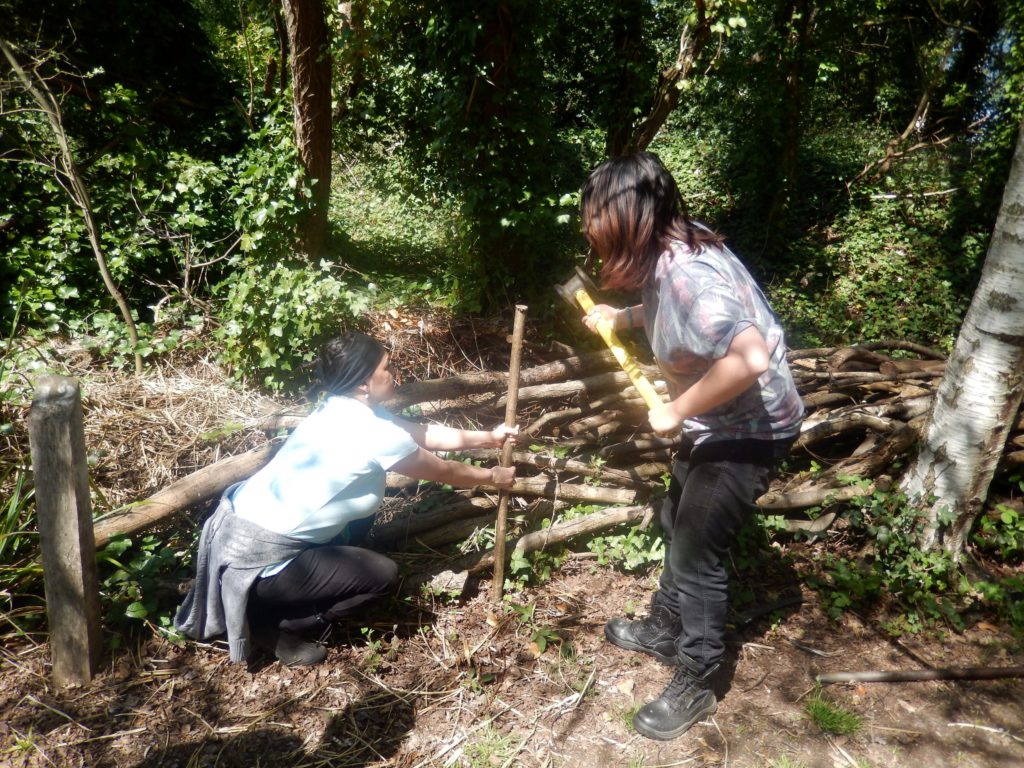
We hammered in a line of posts for the log hedge, to reduce the number of sticks finding their way into the pond. The ground was rather stony in places, and the iron bar came in handy to break through the stony layer first.
As we did the butterfly transect (Green-Veined White, Brimstone, Holly Blue, Speckled Wood, Large White), we saw a Sparrowhawk swoop into a tree, whistling to his mate. So it seems they’re nesting here again this year.
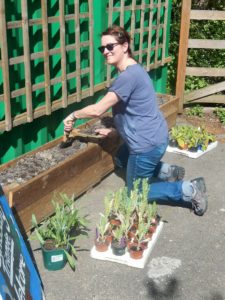
Back at the ranch, Jo was planting out some nice-looking small cornflowers, poppies, climbing nasturtiums and foxgloves raised by the Chiswick Horticultural & Allotments Society’s greenhouse team.
Two days later, the Swifts arrived in the skies over Chiswick, bringing their screaming flight calls to announce summer.
